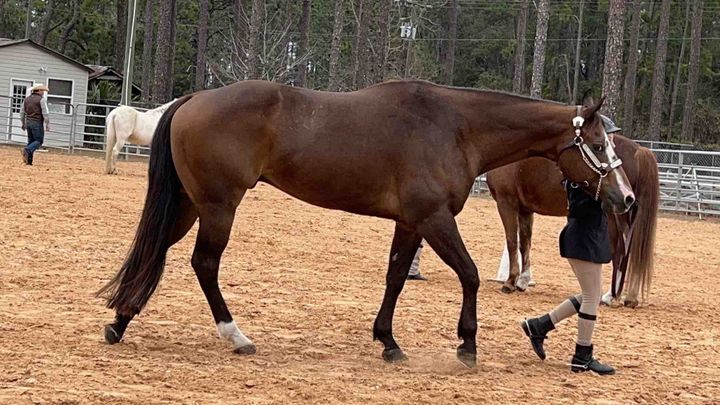
Ruger needs Hyperbaric Oxygen treatment
Donation protected
Ruger joined our barn family about a year ago. Since then he has been used for lessons and taken several students to shows. Recently he was diagnosed Clostridial Myositis, and left untreated it will kill him. We have had the vet out several times and she has helped him a lot. She is now recommending Hyperbaric Oxygen treatment. This will significantly help his odds of recovery. He will be sent to Equine Performance Innovative Center in Ocala, FL. For a one week stay with 5 sessions of Hyperbaric Oxygen therapy is $3000, plus veterinary care. His current vet bills have been taken care of. We are asking for help offsetting the costs of the specialized treatment.Here is a little information about his diagnosis:A variety of clostridial bacteria can sporulate at the site of an injection or deep wound, causing focal muscle swelling and systemic toxemia in horses. Clostridium septicum, C chauvoei, C sporogenes, and mixed infections are associated with a high fatality rate; C perfringens type A has a mortality rate of 20% with early and aggressive treatment. Clostridial spores may lie dormant in skeletal muscle, or spore deposition directly into the tissue may occur in association with penetration. If suitable necrotic conditions exist, the spores convert to the vegetative form, releasing exotoxins. Within 48 hours, horses show lethargy, fever, toxemia, tachypnea, and swelling and variable crepitus at the injection site. Tremors, ataxia, dyspnea, recumbency, coma, and death may occur in the next 12–24 hours. Myocardial damage occurs in some horses. Hematologic and serum biochemical analyses usually reflect a generalized state of debilitation and toxemia (eg, hemoconcentration and a stress or toxic leukogram may be present). Serum CK and AST activities are usually moderately increased; however, they often do not reflect the toxic effects of clostridial myonecrosis. Ultrasonographic evaluation of swollen areas may reveal fluid and characteristic hyperechoic gas accumulation. Aspirates of affected tissues examined via direct smears or fluorescent antibody staining should show characteristic rod-shaped bacteria. Anaerobic bacterial culture of freshly acquired samples may also be of value. Cut tissue from the affected area may reveal abundant serosanguineous fluid with an odor of rancid butter. At postmortem examination, swelling, crepitus, and autolysis are rapid, and hemorrhagic fluid is often observed discharging from body orifices. Wound fenestration and aggressive surgical debridement over the entire affected area is required for successful treatment. Additional treatment includes high doses of potassium penicillin (30,000 to 60,000 U/kg, IV, every 2–4 hours until the horse is stable [1 to 5 days]), combined with or followed by metronidazole (20 to 25 mg/kg, PO, every 6 hours for 20 days) along with supportive fluid therapy and anti-inflammatory agents. Extensive skin sloughing over the affected area is common in surviving horses.
Organizer
Dustin Lee
Organizer
Kingsland, GA